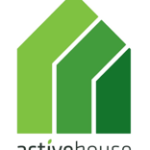The Lake Design Headquarters of CSWADI

Comfort:
The effective coupling of passive building technology and pre-cooling technology is the innovation point of climate design. Combined with the thermal insulation design of the enclosure structure, the natural ventilation pre-cooling technology is adopted reasonably, and the high-efficiency heat pump (modular multi-connection) is used as a backup. The facade of the building is mainly a glass curtain wall. The main office area meets the requirements of natural daylighting. At the same time, in order to avoid the sun exposure and adjust the indoor lighting effect, external shading measures are added on the west facade to reduce the overall shading coefficient and achieve energy-saving effect. Emphasis on the personal environment unit, the desktop station air supply device combined with the furniture design, the fresh air utilization efficiency is high, the personnel can adjust the wind speed for different situation, the air temperature and the air supply direction to achieve the highest comfort satisfaction for individual.
Example: It has been a basis design parameter to have a minimum daylight level of 5% and it has been reached by use of daylight from minimum two orientations in all main rooms. All glazing areas towards the south and west have to be shaded during warm periods and is supplemented with natural ventilation and thereby the indoor thermal comfort level during hot periods. The air quality in all main rooms is controlled when occupied and the ventilation is optimized to keep the CO2 level and humidity low.

Energy:
Both direct and indirect methods have been used to reduce energy using. The roof solar photovoltaic systems have been used in this project, the thin film components, which do not use crystalline silicon components; the performance is better under low light conditions (Chengdu is a weak light region). At the same time, the roof uses solar-sensing lights, which do not need to be powered by the mains power supply. The sun’s natural light can be used for a long time after being charged. The water in the shower room of the non-motor vehicle garage is preheated by the solar water heater. Ventilation and pre-cooling technical measures are also been used, the annual energy consumption of the transitional season is reduced by 34%, and the annual energy consumption of the air-conditioning season is reduced by about 10% for ventilation during the night. The annual energy consumption during the nighttime ventilation and transitional seasons of the air-conditioning season is reduced by 24%.
Example: The basic focus within energy has been to minimize the use of energy and to optimize the building design. The heat loos through the climate shell has been minimized using the best insulation solutions, reduce thermal bridges and creating an air tight construction. Thereby the need for energy has reached a level of 20 kWh/m2 and with the supplementary use of energy for hot water, ventilation light, etc. The overall energy use is below 40 kWh/m2. Using a heat pump with a COP of 3.5, the final need of energy has reached a level of 20 kWh/m2. The supply of electricity is based on 50% renewable energy in the grid and the supplementary renewable energy are supplied with PV installed on the garage.

Environment:
BIM runs through the life cycle of the project’s feasibility study, building design, implementation, operation and maintenance. Thereby achieving the refined management of the whole life cycle of the project, improving the overall design level of the project and improving the quality and efficiency of construction and operation management. The rainwater recycling system is used to collect the rainwater for landscape water use and basement or road washing; the application of the sponge city theory, setting up grass ditch and rainwater pool, and using aquatic plants to filtrate and purify rainwater. In the basement car washing area, use water recycling system can enhance water use efficiency. Moreover, interior select high-efficiency specialized appliance and process water systems to reduce water use.
Example: The design on the load bearing structure has been based on an expectation that the concrete structure will be reused when the building is out of use after 100 years. The outer surface is based on a wooden structure that are ventilated and protected from direct rain, reducing the need for surface treatment. The wood used are certified and comes from forests that are FSC certified. In order to reduce the use of water a structure for use of rain water for toilets and gardening has been established.



